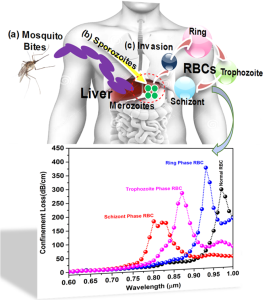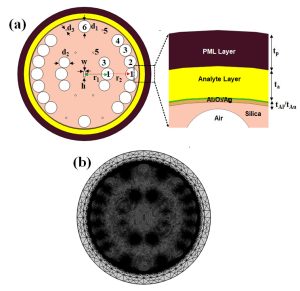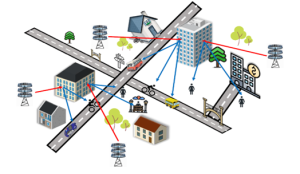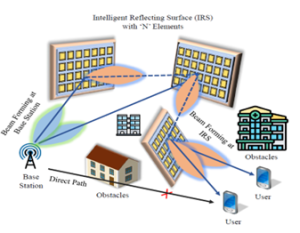Recent News
- A Breakthrough Patent for the Automated Abnormality Detection System July 22, 2024
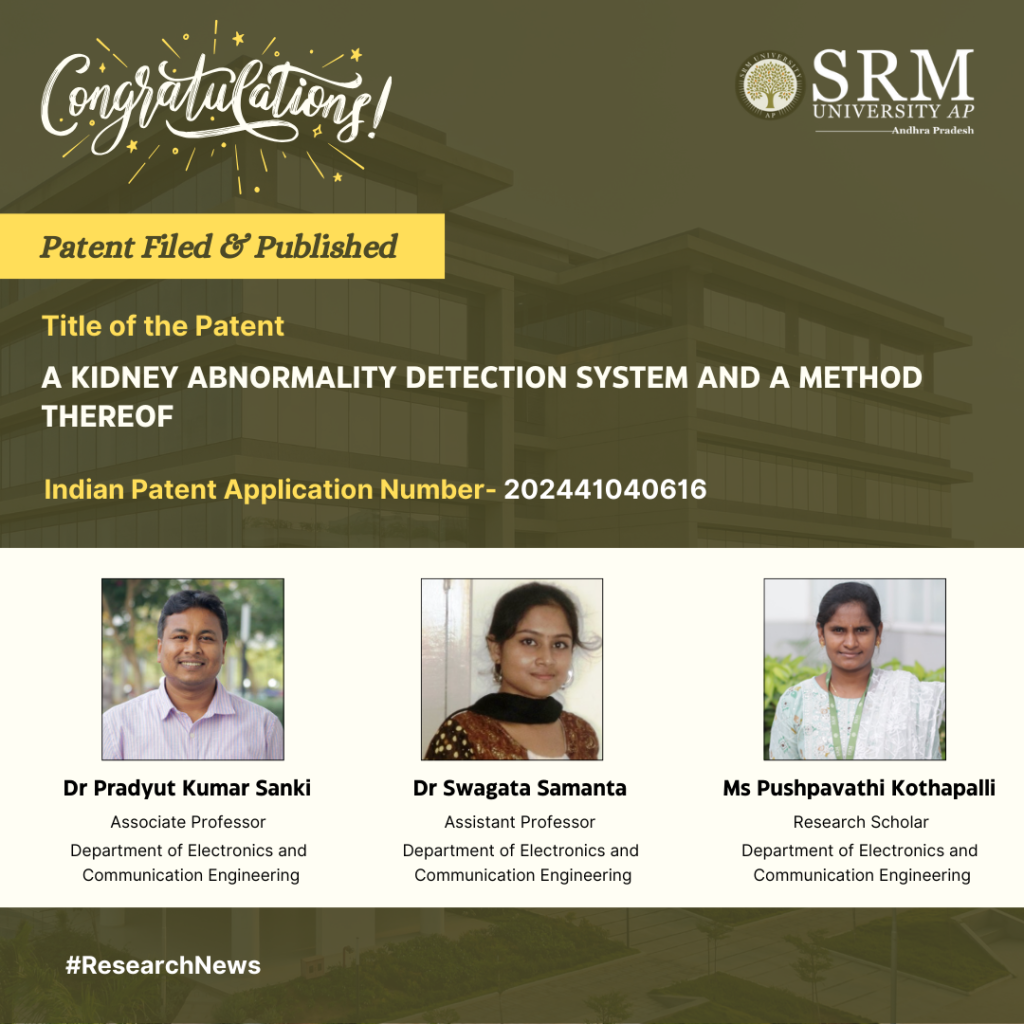
Dr Pradyut Kumar Sanki, Dr Swagata Samanta, and research scholar Ms Pushpavathi Kothapalli from the Department of Electronics and Communication Engineering published their patent titled “A Kidney Abnormality Detection System And a Method Thereof,” with Application No. 202441040616. This innovative method, which utilises advanced deep learning techniques, promises to revolutionise the accuracy and efficiency of kidney disease diagnosis. With the potential for widespread clinical adoption, this technology aims to enhance patient care, offering a brighter future for kidney disease detection and treatment.
Abstract:
This research work aimed to develop a method for detecting kidney diseases, including kidney stones, cysts, and tumors. The method achieved high accuracy in detecting kidney diseases, with a good mean average precision, precision, and recall. The study used techniques to select the most relevant features for kidney disease detection, identifying top features related to blood tests and patient health. The method outperformed other approaches in terms of accuracy, precision, and recall. The study used a comprehensive dataset of kidney disease patients to train and test the method. The results suggest that the method has the potential to be widely adopted in clinical settings, contributing to more accurate and efficient diagnostic tools for kidney disease detection and improving patient care.
Practical implementation:
The practical implementation of our research involves deploying a system for real-time detection and classification of kidney disease, including kidney stones, cysts, and tumors. The method achieved high accuracy in detecting kidney diseases using the Deep learning technique. Our model can quickly identify the disease of the kidney. The study used techniques to select the most relevant features for kidney disease detection, identifying top features related to blood tests and patient health. The method outperformed other approaches in terms of accuracy, precision, and recall. The study used a comprehensive dataset of kidney disease patients to train and test the method. The results suggest that the method has the potential to be widely adopted in clinical settings, contributing to more accurate and efficient diagnostic tools for kidney disease detection and improving patient care.
Future Research Plans:
The future plans for the work on chronic kidney disease (CKD) detection and management involve several key areas:1. Improved Screening and Diagnosis: Update the United States Preventive Services Task Force (USPSTF) recommendation for CKD screening to reflect current evidence supporting routine screening for high-risk asymptomatic adults.
2. Enhanced Patient Engagement and Person-Centered Care: Advance education of primary care clinicians about CKD risk factors, testing, detection, and interventions that are graded and proportional to the eGFR and uACR risk stratification or heat map.
3. Advancements in Nephrology: Develop novel therapeutic strategies, such as wearable artificial kidneys, xenotransplantation, stem cell-derived therapies, and bioengineered and bio-artificial kidneys, to improve renal replacement therapies and address the shortage of kidney donors.
4. Machine Learning and Predictive Modelling: Continue to evaluate and improve machine learning approaches for early CKD diagnoses, focusing on reducing the number of input features and enhancing the accuracy of prediction models.
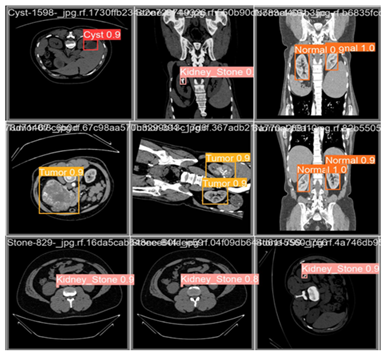
Continue reading → - Groundbreaking Paper Offers Geo-Temporal Visualisation of COVID-19 Spread in India July 18, 2024
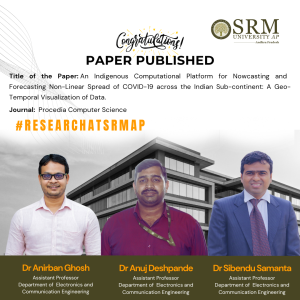 In an exciting development, Dr Anirban Ghosh, Dr Anuj Deshpande, and Dr Sibendu Samanta, Assistant Professors from the Department of Electronics and Communication Engineering, have recently achieved a significant milestone with the publication of their paper titled “An Indigenous Computational Platform for Nowcasting and Forecasting Non-Linear Spread of COVID-19 across the Indian Sub-continent: A Geo-Temporal Visualization of Data” in the esteemed journal, Procedia Computer Science.
In an exciting development, Dr Anirban Ghosh, Dr Anuj Deshpande, and Dr Sibendu Samanta, Assistant Professors from the Department of Electronics and Communication Engineering, have recently achieved a significant milestone with the publication of their paper titled “An Indigenous Computational Platform for Nowcasting and Forecasting Non-Linear Spread of COVID-19 across the Indian Sub-continent: A Geo-Temporal Visualization of Data” in the esteemed journal, Procedia Computer Science.The paper focuses on the development of a state-of-the-art computational platform specifically tailored for nowcasting and forecasting the non-linear spread of COVID-19 across the Indian sub-continent. This pioneering work promises to offer valuable insights into the geo-temporal visualisation of data related to the COVID-19 pandemic, with potential implications for public health interventions and policy decisions.
The publication of this paper serves as a testament to the innovative research being conducted by the faculty members at the Department of Electronics and Communication Engineering. Their dedication and expertise in the field have not only contributed to advancing scientific knowledge but also hold considerable promise for making a real-world impact in the ongoing fight against the COVID-19 pandemic. We extend our congratulations to Dr Anirban Ghosh, Dr Anuj Deshpande, and Dr Sibendu Samanta for this remarkable accomplishment and look forward to witnessing the continued impact of their research in addressing critical challenges facing the world today.
Abstract
The rapid spread of the COVID-19 pandemic necessitated unprecedented collective action against coronavirus disease. In this light,we are proposing a novel online platform for the visualisation of epidemiological data incorporating social determinants for understanding the patterns associated with the spread of COVID- 19. The current AI computational platform combines modelling methodologies along with temporal, geospatial visualisation of COVID-19 data, providing real-time sharing of graphic analytical simulation of vulnerable hotspots of recurrent (nowcasting) and emergent (forecasting) infections visualised on a spatiotemporal scale on geoportals. The proposed study will be a secondary data analysis of primary data accessed from the national portal (Indian Council of Medical Research (ICMR)) incorporating 766 districts in India. Epidemiological data related to spatiotemporal visualisation of the demographic spread of COVID-19 will be displayed using a compartmental socio-epidemiological model, reproduction number R, epi-curve diagrams, as well as choropleth maps for different levels of administrative and development units at the district levels.
Explanation of the Research in Layperson’s Terms
The rapid spread of COVID-19 required quick and coordinated action. To aid the process, we have created a new online platform to help visualise COVID-19 data, including social factors that affect its spread. Our platform uses advanced computer models and shows COVID-19 data over time and across locations. It allows real-time sharing of visual analyses, highlighting areas at risk for current and future infections. The effectiveness of the platform lies in the fact that it is not limited to COVID-19. It can be suitably modified and employed for capturing similar trends for any future pandemic.
Title of the Research in the Citation Format
Priya Ranjan, Dhruva Nandi, Karuna Nidhi Kaur, Rohan Rajiv, Kumar Dron Shrivastav, Anirban Ghosh, Anuj Deshpande, Sibendu Samanta, Rajiv Janardhanan, “An Indigenous Computational Platform for Nowcasting and Forecasting Non-Linear Spread of COVID-19 across the Indian Sub-continent: A Geo-Temporal Visualization of Data”, Procedia Computer Science, Volume 235, 2024, Pages 496-505, ISSN 1877-0509,
https://doi.org/10.1016/j.procs.2024.04.049Practical Implementation and Social Implications Associated
As mentioned earlier, the platform can be used to present real-time data analysis and identify emerging and current hotspots of the COVID-19 pandemic. However, the beauty or robustness of the platform lies in the fact that it can be suitably adapted for similar analysis for any future pandemic with minimum effort.
Collaborations
- University of Petroleum and Energy Studies, Energy Acres, Dehradun, Uttarakhand, India
- SRM Medical College Hospital and Research Centre, SRMIST, Kattankulathur, Tamil Nadu, 603203, India
- Amity Institute of Public Health, Amity University, Noida, Uttar Pradesh, 201303, India
Future Research Plans
The future plan includes improving the visual and graphical presentation of the platform to provide more insightful and intuitive information. Aggregation of data from other international databases would further augment the effectiveness of the platform by not limiting it to only the national scenario.
Continue reading → - Innovative Aquaculture Monitoring System Patented by Dr K A Sunitha and Team June 27, 2024
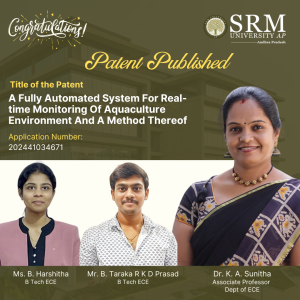 In a significant advancement for aquaculture technology, Dr K A Sunitha, Associate Professor in the Department of Electronics and Communication Engineering, along with her B.Tech ECE students Ms B Harshitha and Mr B Taraka Rameswara Kanaka Durga Prasad, have made headlines with their latest invention. The team has successfully filed and published a patent for “A Fully Automated System for Real-Time Monitoring of Aquaculture Environment and a Method Thereof.” The application number 202441034671, has been officially recorded in the Patent Office Journal, marking a milestone for the team and the institution they represent.
In a significant advancement for aquaculture technology, Dr K A Sunitha, Associate Professor in the Department of Electronics and Communication Engineering, along with her B.Tech ECE students Ms B Harshitha and Mr B Taraka Rameswara Kanaka Durga Prasad, have made headlines with their latest invention. The team has successfully filed and published a patent for “A Fully Automated System for Real-Time Monitoring of Aquaculture Environment and a Method Thereof.” The application number 202441034671, has been officially recorded in the Patent Office Journal, marking a milestone for the team and the institution they represent.
This pioneering system promises to revolutionise the way aquaculture environments are monitored by leveraging automation to ensure real-time, accurate assessments. The invention stands as a testament to the innovative spirit and dedication of Dr Sunitha and her students, who are now recognised as contributors to the technological advancements in the field of aquaculture.Abstract
This project involves the design and development of an Automated water quality analysis system to assist aquaculture farmers. The proposed system is tailored for aquatic environments, particularly ponds to monitor crucial parameters say Dissolved Oxygen (DO), PH, Temperature and Humidity levels, signaling when concentrations drop below the predefined threshold set by the user every thirty minutes. The system features autonomous activation and deactivation of aerators to ensure continual oxygenation of water and aids in energy optimisation. Utilising advanced sensors and a microcontroller, the device offers continuous monitoring of parameters to facilitate pond operators with timely insights into water quality dynamics, enabling proactive interventions to protect aquatic ecosystems.
Brief Explanation of the Project
India is the second-largest aquaculture nation in the world, and this sector provides livelihood support to about 280 lakh people. The aquaculture industry globally faces numerous challenges, such as Viral, bacterial, and fungal diseases and Suboptimal water quality. One crucial criterion for evaluating the quality of water is measuring the Dissolved Oxygen level. Water and other liquids contain free, non-compound oxygen, which is measured as dissolved oxygen (DO).
Long-term exposure to low DO levels increases stress and infections and, in certain situations, causes the death of the organism because dissolved oxygen is essential for the health and reproduction of many fish and invertebrates. This project highlights the design of a timer based automated water quality analysis system which can be used in the inland aquaculture farms to continuously monitor the water parameters and automate the calibration process and the operation of aerators without human intervention.
Practical Implications of the Research
The main objectives of this research are
1) To monitor the parameters, say Dissolved Oxygen, PH, Temperature and Humidity levels
every thirty minutes.
2) To automate the Calibration process to maintain accuracy and reliability of the system.
3) To automatically turn ON/OFF the aerators in the event of Low/High oxygen levels detection in the pond.
4) To send notifications to the technician or farmer every thirty minutes to help them monitor.Future Research Plans
The developed prototype is currently validated with standard DO meter during experimental trials. Moving forward, further research and development efforts may focus on refining the system’s functionality, expanding its sensor capabilities, and integrating advanced analytics for predictive monitoring and decision support, thereby advancing the state-of-the-art in aquaculture management technology and promoting the long-term viability of inland aquaculture operations.
Pictures Related to Research
Continue reading →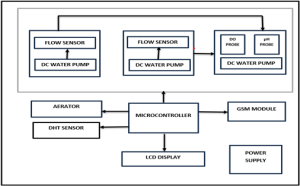
- Developing Biosensors using Photonic Crystal Fibres and Surface Plasmon Resonance (SPR) June 25, 2024
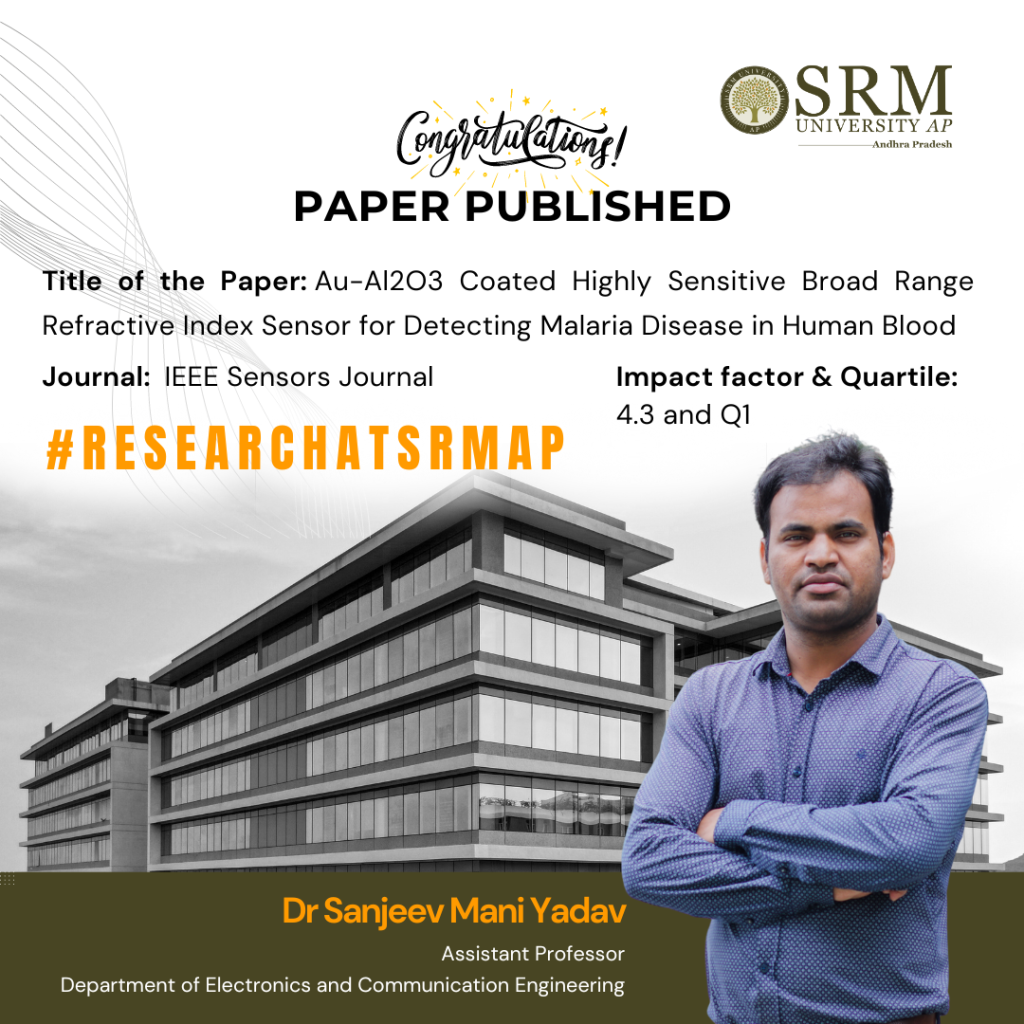
Dr Sanjeev Mani Yadav, Assistant Professor from the Department of Electronics and Communication Engineering, has published a cutting-edge research paper titled “Au-Al2O3 Coated Highly Sensitive Broad Range Refractive Index Sensor for Detecting Malaria Disease in Human Blood” in the IEEE Sensors Journal with an impact factor of 4.3. This research focuses on developing a highly sensitive biosensor using photonic crystal fibres and a technique called surface plasmon resonance (SPR) to detect changes in the refractive index, which is how much light bends when it enters a material. This biosensor can also detect malaria in the human body.
Abstract
The paper represents the photonic crystal fibre-based surface plasmon resonance (SPR) biosensor for broad-range refractive index sensors along with the detection of malaria disease in the human body. α-Al2O3-Au dielectric-metal interface has been proposed to stimulate the free electron on the metal surface via evanescent to result in an SPR phenomenon. The proposed sensor shows a sufficient shift in resonance wavelength for the change in external RI from 1.32 to 1.40 for an optimised Al2O3/Au thickness of 50nm/12nm. The broad-range sensing applicability of the designed sensor shows a maximum sensitivity of 6000 nm/RIU when the external RI changes from 1.38 to 1.40. The detection accuracy of the designed sensor is reported to be 1.66×10-5 (RIU) and reported compatible in comparison to broad RI sensors. The proposed SPR sensor has been utilised to sense the malaria diseases in the human body by filling infected RBC samples on the dielectric-metal surface. The proposed study aids in detecting various stages of malaria-infected RBCs, including the Ring phase, Trophozoite phase, and Schizont phase, by measuring the shift in resonance wavelength. The sensor’s wavelength sensitivity varies across the phases: 5714.28 nm/RIU for the Ring phase, 5263.15 nm/RIU for the Trophozoite phase, and 5931 nm/RIU for the Schizont phase. The sensor exhibits the highest reported sensitivity among other biological sensors in this category. The proposed sensor fulfils all the requirements for a diagnosis of early malaria disease in the human body, along with its high sensitivity, low detection limit, and capability of sensing broad RI.
How does the sensor work?
1. Biosensor Basics: The sensor uses a combination of a special crystal fibre and a metal surface (a mix of aluminium oxide and gold) to create a reaction when light hits it. This reaction is called SPR and it helps in detecting tiny changes.
2. Detecting Changes: When the external refractive index (a measure of how light bends in a substance) changes, the sensor detects this by a shift in the wavelength (colour) of the light. The study found that the sensor is very sensitive to changes in the refractive index between 1.32 and 1.40.
3. Sensitivity: The sensor is incredibly sensitive, with a maximum sensitivity of 6000 nm/RIU (nanometres per refractive index unit). This means it can detect very small changes very accurately.
4. Malaria Detection: The sensor can also detect malaria by analysing infected red blood cells. Different stages of malaria infection (Ring, Trophozoite, and Schizont) cause different shifts in the wavelength, which the sensor can measure. The sensor’s sensitivity varies slightly with each stage but is consistently high.
5. High Performance: This sensor is reported to have the highest sensitivity compared to other similar sensors and meets all the requirements for early malaria diagnosis due to its high sensitivity, low detection limit, and ability to detect a wide range of refractive indices.
In essence, this sensor is a powerful tool for detecting both refractive index changes and malaria in the human body with high accuracy and sensitivity.
Practical implementation/Social implications of the research
The photonic crystal fibre-based SPR biosensor represents a significant advancement in medical diagnostics with wide-ranging practical applications and social implications. Its high sensitivity and accuracy in detecting malaria and potentially other diseases can lead to better health outcomes, economic benefits, and improved access to healthcare, particularly in regions that need it the most.
Dr Sanjeev Mani Yadav acknowledges Dr Amritanshu Pandey, Electronics Engineering Department, IIT (BHU) Varanasi, for his continuous support and guidance throughout this research.
Continue reading → - Cutting-Edge Research by Dr Chinnadurai Elevates MIMO Wireless Communication Standards June 25, 2024
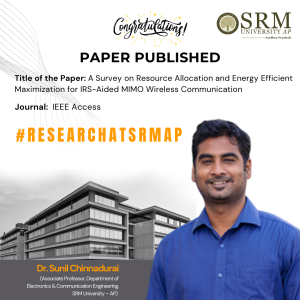
A Survey on Resource Allocation and Energy Efficient Maximization for IRS-Aided MIMO Wireless Communication
In a significant advancement for wireless communication technology, Dr Sunil Chinnadurai, Associate Professor in the Department of Electronics & Communication Engineering, has made a remarkable contribution to the field. His latest paper, titled “A Survey on Resource Allocation and Energy Efficient Maximization for IRS-Aided MIMO Wireless Communication,” has been published in the prestigious journal IEEE Access.
The paper delves into the intricacies of Intelligent Reflecting Surfaces (IRS) and their role in enhancing Multiple Input Multiple Output (MIMO) wireless communication systems. Dr. Chinnadurai’s research focuses on optimizing resource allocation and maximizing energy efficiency, which is a critical aspect of sustainable technological development.
This publication is expected to pave the way for more efficient and environmentally friendly wireless communication solutions, reflecting Dr Chinnadurai’s commitment to innovation and excellence in research.Abstract of the Research
This paper surveys the integration of Multiple-Input Multiple-Output (MIMO) systems with Intelligent Reflecting Surfaces (IRS) in wireless communications. It explores how IRS technology enhances MIMO performance by manipulating the propagation environment through improved signal manipulation and beamforming. The survey covers resource allocation, energy efficiency techniques, optimization strategies, and practical implementation challenges. Key research areas and future directions are highlighted, emphasizing the potential of MIMO-enabled IRS systems to enhance wireless communication efficiency and coverage significantly.
Explanation of the Research in Layperson’s Terms
This paper explores how two advanced technologies, MIMO and IRS, can improve wireless communications. MIMO uses multiple antennas to enhance data transmission, while IRS involves smart surfaces that direct signal paths to boost strength and coverage. By combining these technologies, the paper examines how to make wireless networks faster, more reliable, and energy-efficient. It discusses practical ways to implement these improvements and identifies challenges and future research areas to make these advancements widely usable. In essence, this combination promises better wireless connectivity for everyone.
Practical Implementation or the Social Implications Associated with the Research
Integrating MIMO and IRS technologies into wireless networks can significantly enhance network performance, especially in urban and rural areas. Telecommunications companies can install IRS panels on structures to boost signal strength and coverage, while smart homes and cities can benefit from improved IoT connectivity and energy management. This combination also promotes energy-efficient networks, reducing operational costs and environmental impact. Socially, this technology can bridge the digital divide, providing better internet access to underserved areas and enhancing education, healthcare, and economic development. It supports new business models and innovations, leading to job creation and economic growth. Improved connectivity enhances quality of life through better access to information, entertainment, and remote work opportunities. Additionally, it strengthens public safety by improving communication during emergencies. Combining MIMO and IRS technologies promises a more connected, efficient, and sustainable world.
Pictures Related to the Research:
Future Research Plans
Future research on MIMO and IRS integration should focus on advanced optimisation for resource allocation and energy efficiency, innovative beamforming strategies, practical deployment challenges, and robust security protocols. Enhancing energy efficiency and contributing to standardization and regulation is also critical. These efforts will unlock the full potential of MIMO and IRS, leading to more efficient, reliable, and secure wireless communication systems.
Continue reading →


